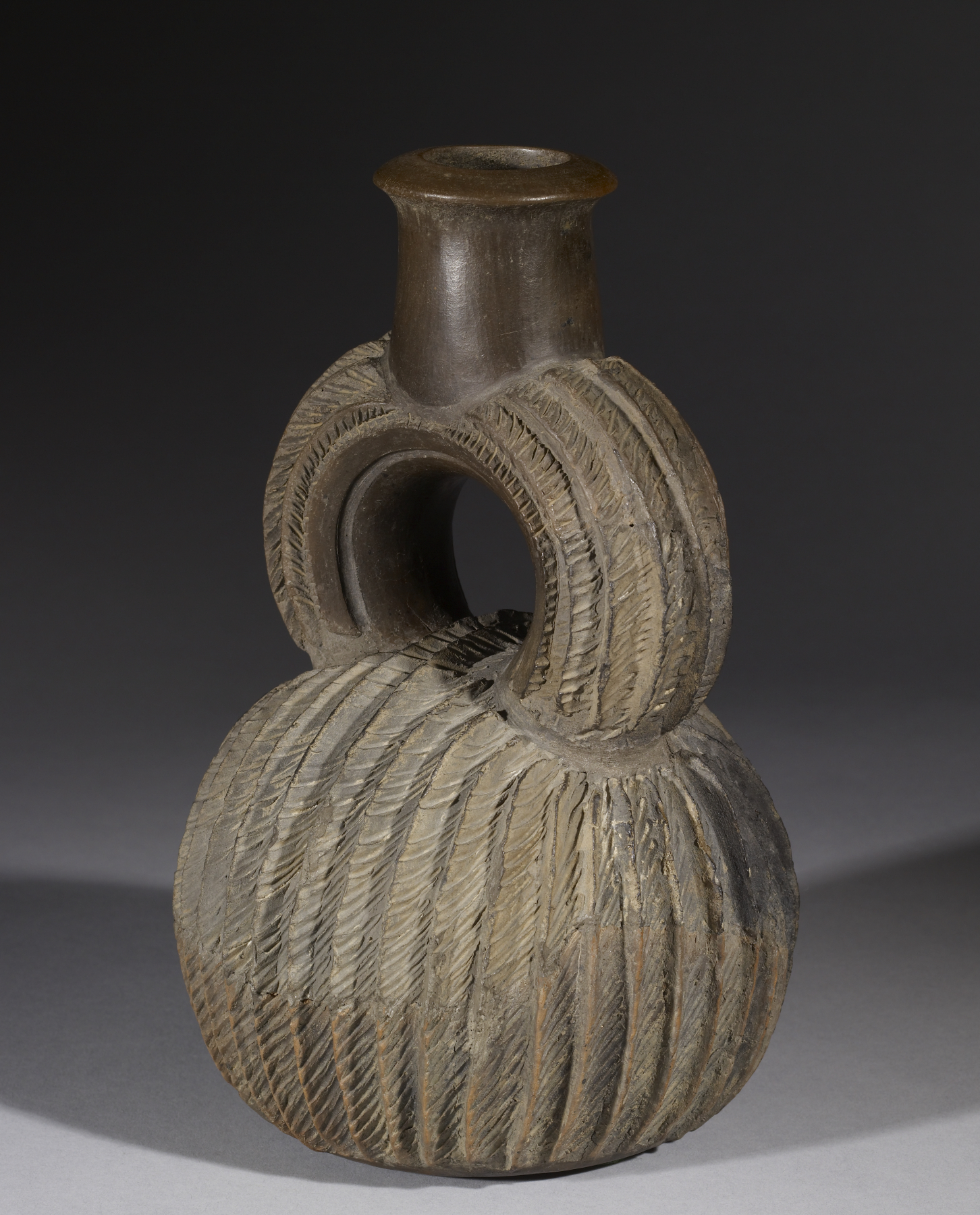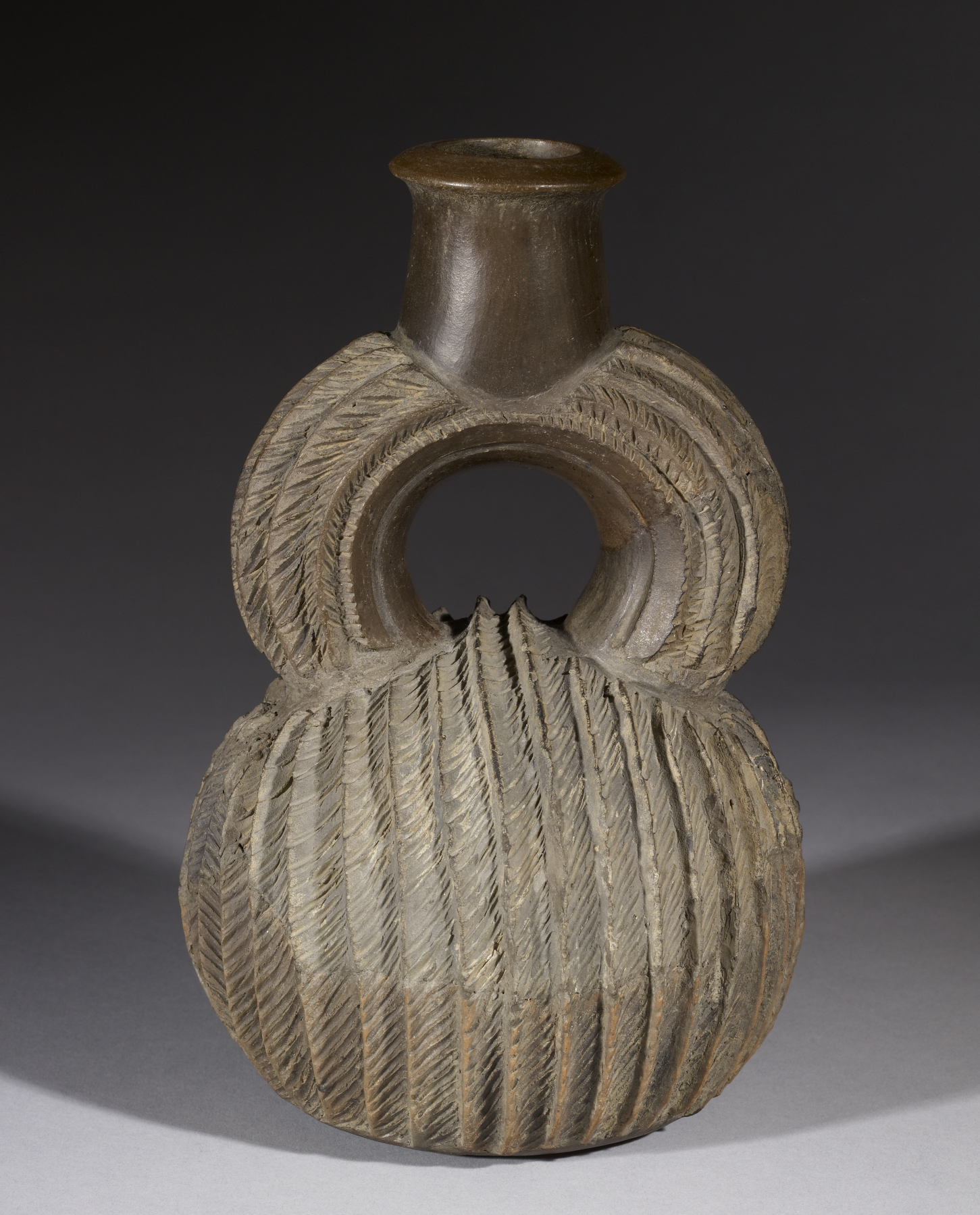Stirrup-spout Vessel with Ridged Surface
(Ancient Americas )
This “stirrup-spout” vessel is modeled with the rough ridges of a gourd or perhaps of the San Pedro cactus, whose branches contain a hallucinogenic substance. The cactus is used in traditional medicine and religious ritual to this day. The sacredness or ritual power of the vessel is suggested by the fact that parts of it seem to have been rubbed in ancient times with the red pigment known as cinnabar, a substance that was used in consecration rituals.
The “stirrup spout” was one of the most common vessel forms in pre-Columbian Peru and the Andean area. A short spout at the top is attached to two tubes which join with the vessel itself. The form is reminiscent of a stirrup for horseback riding, hence the name. The resulting container was beautiful and versatile, since the main vessel could be shaped into many different forms, with a surface that was either carefully polished or highly textured. These vessels were also practical: in the extremely dry deserts of Peru, such a narrow opening prevented evaporation of the liquid held within. The complex shape of the neck also meant that it was easy to carry: two such vessels could be tied to the ends of a cord, to be slung over a person’s shoulder or a llama’s back. Large numbers of vessels like these have been found in burials of elites on the north Coast of Peru beginning about 1800 BCE.
Provenance
Provenance (from the French provenir, 'to come from/forth') is the chronology of the ownership, custody, or location of a historical object.
D. Daniel Michel, Chicago, 1977, by purchase, no. 77:174; Ancient Art of the New World, New York [date and mode of acquisition unknown]; Private collection, 1991, by purchase; Walters Art Museum, 2009, by gift.
Geographies
Peru (Place of Origin)
Measurements
H: 9 1/8 × Diam: 5 3/4 in. (23.2 × 14.6 cm)
Credit Line
Anonymous gift, 2009
Location in Museum
Not on view
Accession Number
In libraries, galleries, museums, and archives, an accession number is a unique identifier assigned to each object in the collection.
In libraries, galleries, museums, and archives, an accession number is a unique identifier assigned to each object in the collection.
48.2861




